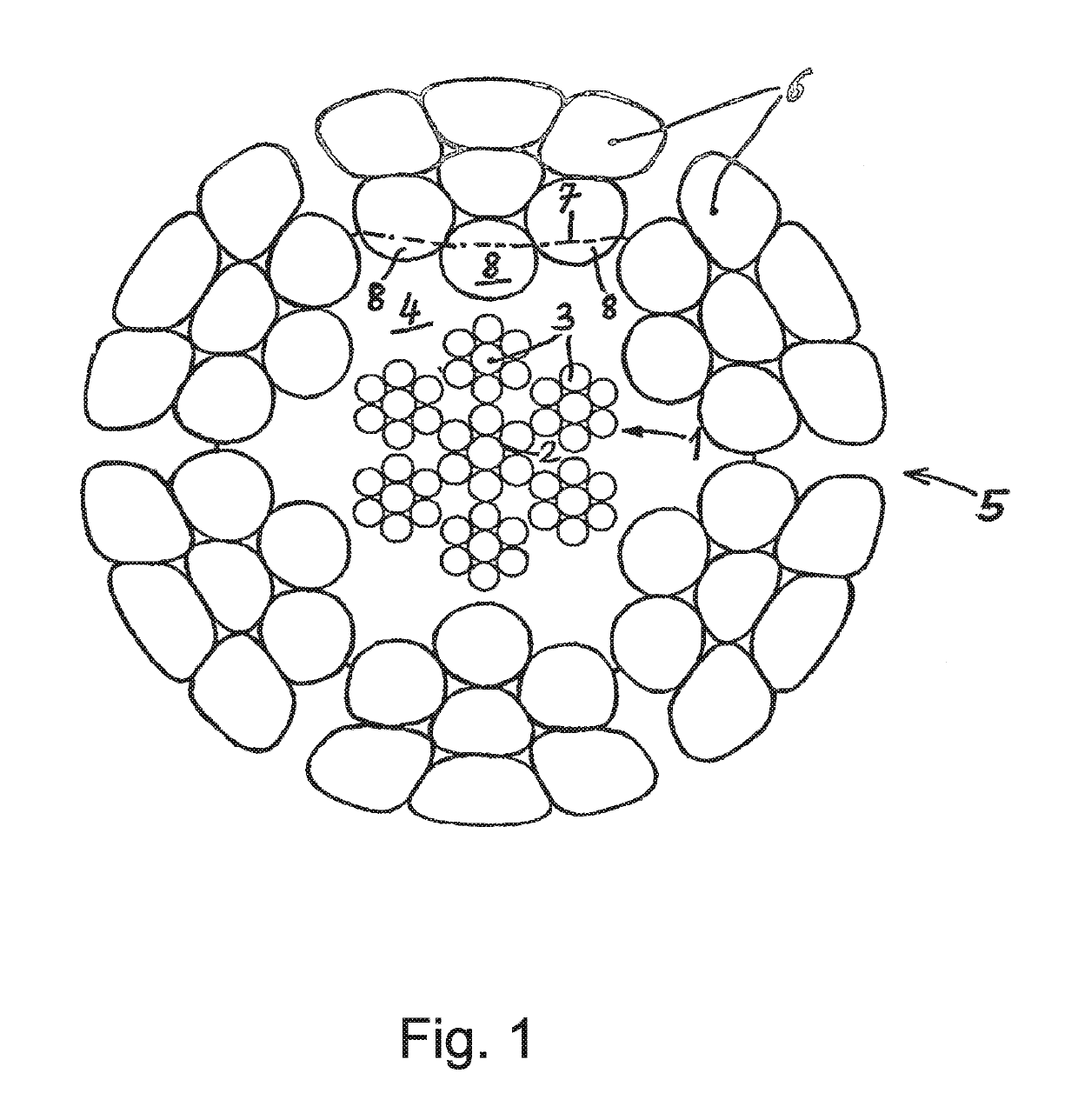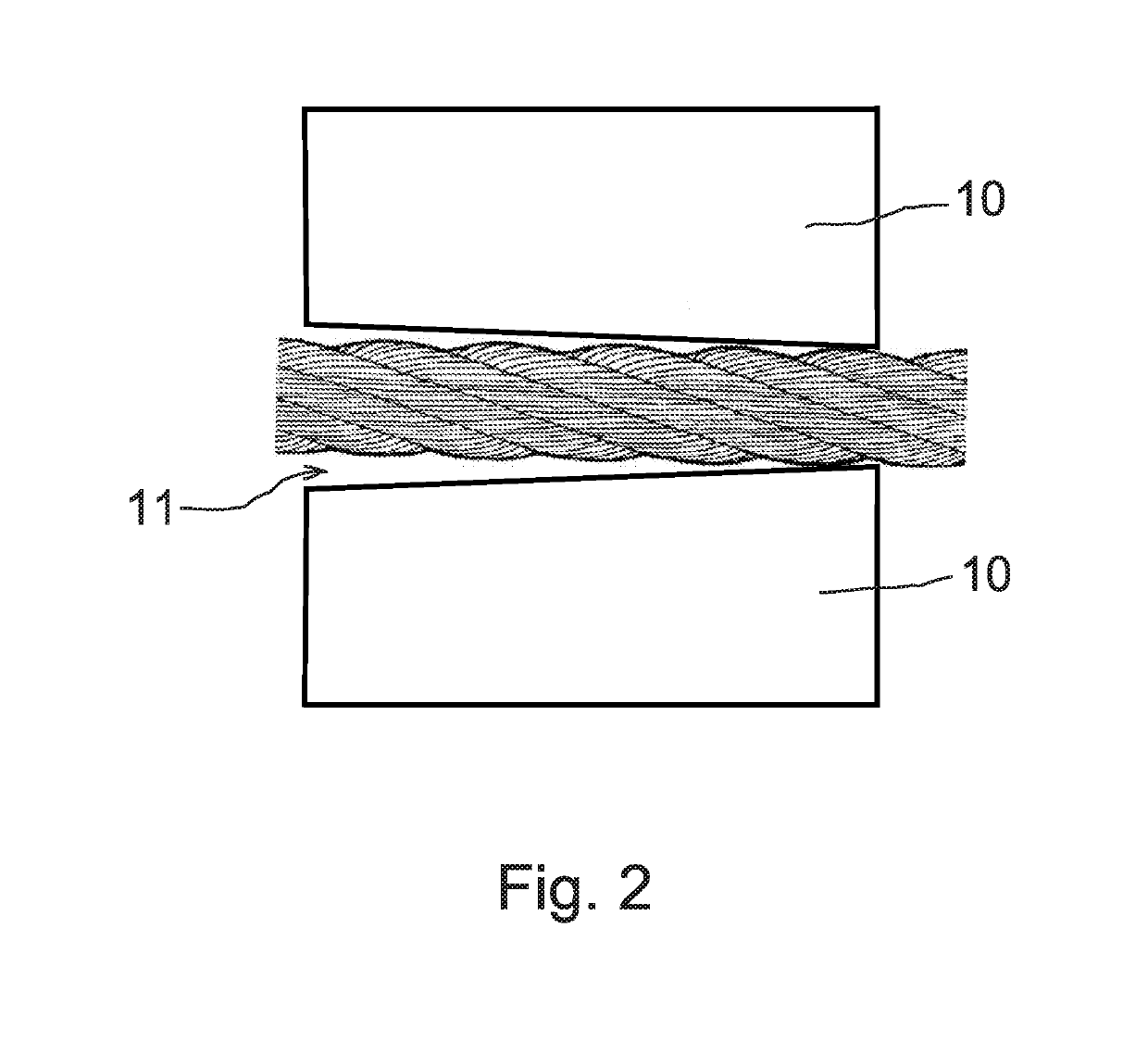Method for producing a wire cable
a wire cable and wire technology, applied in the field of wire cable production, can solve the problems of increased risk of accidents, cable unusability, operation disruption, etc., and achieve the effect of preventing wire damag
- Summary
- Abstract
- Description
- Claims
- Application Information
AI Technical Summary
Benefits of technology
Problems solved by technology
Method used
Image
Examples
Embodiment Construction
[0027]A core cable 1, which consists of a central core strand 2 (1+6) and six strands 3 (1+6), is surrounded by a thermoplastic 4.
[0028]During the stranding process on the core cable 1, an outer strand layer 5 that consists of six strands 6 (1+6) is pressed into the plastic 4, which has been softened by heating.
[0029]The wire cable produced in this way was hammered in the manner described above.
[0030]During this treatment, the outer strands 6 were strongly deformed. However, on their underside, the wire cross-sectional sections 8 that lie in the plastic 4, i.e., that lie below the dot-dash line 7, are largely preserved in their original form.
[0031]The core cable 1 was also somewhat deformed and compressed, but this occurred to only a slight extent in this case and is not shown in the drawing.
[0032]Fig. 2 shows the wire rope and to hammers 10 in a cross-section along the axial extension of the wire rope. The inlet of the inlet 11 of the hammers 10 tapers.
PUM
| Property | Measurement | Unit |
|---|---|---|
| diameter | aaaaa | aaaaa |
| axial length | aaaaa | aaaaa |
| deforming forces | aaaaa | aaaaa |
Abstract
Description
Claims
Application Information
 Login to View More
Login to View More - R&D
- Intellectual Property
- Life Sciences
- Materials
- Tech Scout
- Unparalleled Data Quality
- Higher Quality Content
- 60% Fewer Hallucinations
Browse by: Latest US Patents, China's latest patents, Technical Efficacy Thesaurus, Application Domain, Technology Topic, Popular Technical Reports.
© 2025 PatSnap. All rights reserved.Legal|Privacy policy|Modern Slavery Act Transparency Statement|Sitemap|About US| Contact US: help@patsnap.com


